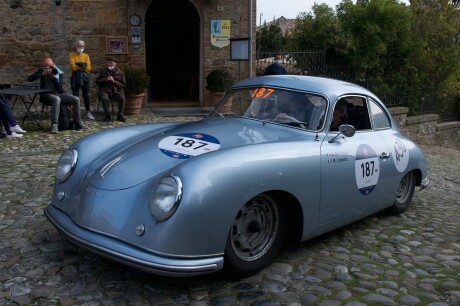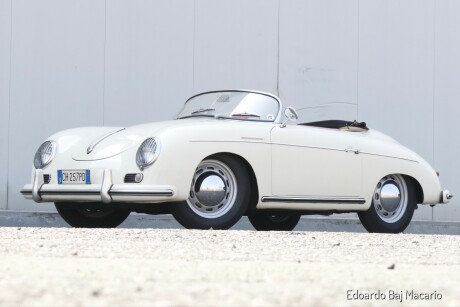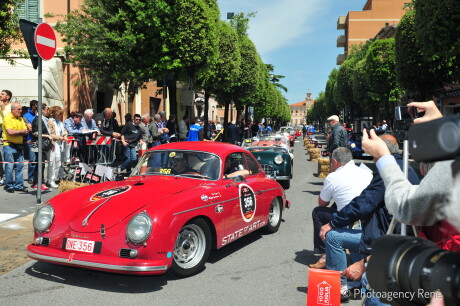
#Porsche356
The Porsche 356 was first produced by Austrian company Porsche Konstruktionen GesmbH (1948-1949) and then by German company Dr. Ing. h. c. F. Porsche GmbH (1950-1965). The 356 was created by Ferdinand "Ferry" Porsche. Like the Volkswagen Beetle designed by his father Ferdinand Porsche Sr., the 356 is a four-cylinder, air-cooled, rear-engine, rear-wheel drive car with unitized pan and body construction. The chassis was designed completely new as well as the body, which was designed by Porsche employee Erwin Komenda, while some mechanical components including the engine case and some suspension components were based on and initially sourced from Volkswagen. When Porsche moved to Stuttgart, it marked the beginning of a close working relationship with the nearby Reutter coachworks - to become the main supplier of Porsche bodies for nearly two decades, before being annexed into the Porsche organization. In order to distinguish between the major revisions of the model, the 356s are usually classified into a few large groups. The 356 was built in four distinct series, the original 356 (also called "pre-A"), built through 1955 are easily identifiable by their split (1948 to 1952) or bent (centre-creased, 1953 to 1955) windscreens. In late 1955 the 356 A appeared, with a curved windshield and with several small but important improvements. Its internal factory designation, "Technical Programme 1", gave rise to its nickname "T1". In early 1957 a second revision of the 356 A was introduced, known as T2. In late 1959, the T5 356 B appeared, followed by the redesigned T6 series 356 B in 1962. The final version was the 356 C, little changed from the late T6 B cars but disc brakes replaced the drums. All 356 generations were also available in an open-top version (Cabriolet, Speedster or Convertible D).At the Frankfurt Show in September 1955 the new 356A Porsche was joined on the stand by a Carrera Porsche with a modified four-cam engine designated 547/1. The four-cam "Carrera" engine, initially available only in the 550 race cars, became an extra cost option starting with the 356 A, and was available through the 356 model run. At full chat the 1498cc engine could reach speeds of almost 120 mph and was capable of 100 bhp, which was more than enough for the 356A's 820 kilogram kerb weight and remarkable feat in the 1950s.
We'll tell the story of this model on the occasion of its anniversary or when it will reach a sufficient number of cars.
If you would like to share your knowledge and archive, click on the banner JOIN THE LAB - HELP US TO IMPROVE & COMPLETE THE INFORMATION.
The census of all the cars related to this topic is in progress.
CARS (3)

1952 Porsche 356 1500 Super
- Coachbuilder: Stuttgarter Karosseriewerk Reutter
- Chassis n°: 11361
- Engine n°: 30240
Private collection

1955 Porsche 1500 Super Speedster
- Coachbuilder: Stuttgarter Karosseriewerk Reutter
- Chassis n°: 80544
- Engine n°: P41254
Private collection

1956 Porsche 356A 1500 GS Carrera Coupé
- Coachbuilder: Reutter
- Chassis n°: 56778
- Engine n°: 91005
Private collection